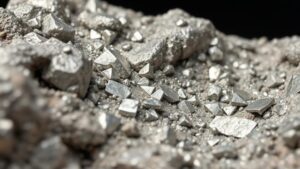Beginner’s Guide to Setting Up a Simple Slicing Station for Gold Recovery
Beginner’s Guide to Settinging Up a Simple Slicing Station for Gold Recovery
Gold recovery is a lucrative endeavor that requires not only technical knowledge but also the right setup. A slicing station simplifies the process of processing ore into a form suitable for gold recovery. This guide will provide you with straightforward steps to set up a basic slicing station, ensuring you can efficiently recover gold from your ore materials.
Understanding the Basics of Gold Recovery
Gold recovery involves extracting gold from its ores, which can be complex due to the presence of other materials. Traditional methods, such as panning and sluicing, can be effective but often require substantial physical effort. Creating a slicing station allows for a more streamlined approach, particularly in separating gold-bearing minerals from waste materials.
Essential Components of a Slicing Station
A well-organized slicing station comprises several essential components:
- Slicing Tool: Use a reliable rock saw or orbital saw for precise cuts.
- Work Surface: A sturdy table or workbench is necessary to accommodate your slicing activities.
- Storage Containers: Use various containers for waste and recovered materials to keep your work organized.
- Safety Gear: Invest in safety goggles, gloves, and a dust mask to protect yourself during the cutting process.
Setting Up the Slicing Station
To create an effective slicing station, follow these steps:
- Location: Choose a suitable outdoor or well-ventilated indoor location to minimize dust and fumes.
- Prepare the Work Surface: Ensure it is clean and level to provide stability while slicing.
- Position the Slicing Tool: Place the slicing tool securely on the work surface, ensuring power connections are safe and accessible.
- Organize Tools and Materials: Arrange all necessary tools and materials in a designated area to streamline the workflow.
Best Practices for Slicing Ore
When slicing ore, adhere to these best practices to enhance efficiency and safety:
- Cut Small Sections: Slice the ore into manageable pieces to avoid overloading the tool and to enhance precision.
- Check for Gold: Regularly inspect sliced pieces for visible gold or gold-bearing minerals.
- Maintain Equipment: Regularly service your slicing tools to ensure they remain in good working condition and produce accurate cuts.
Real-World Applications and Case Studies
Across the globe, gold recovery operations utilize slicing stations in various forms. For example, small-scale miners in South America often depend on effective slicing techniques to optimize their gold recovery. A case study conducted in Peru reported a 30% increase in recovery rates when miners adopted systematic slicing approaches compared to traditional panning methods.
Potential Questions and Concerns
As with any setup, certain questions may arise:
- What if I cannot find gold? Regularly assess different ore samples; change sources if necessary.
- Is it necessary to invest in expensive equipment? While better equipment often yields better results, a budget-friendly setup can still be effective if utilized properly.
Conclusion: Actionable Takeaways
Establishing a slicing station for gold recovery is a straightforward process that significantly enhances your ability to recover precious metals efficiently. By understanding the necessary components, best practices, and leveraging real-world applications, you can implement a productive and safe gold recovery operation. Start by selecting a suitable location, organizing your tools, and adopting meticulous slicing techniques to maximize your gold recovery efforts.

